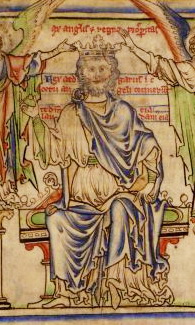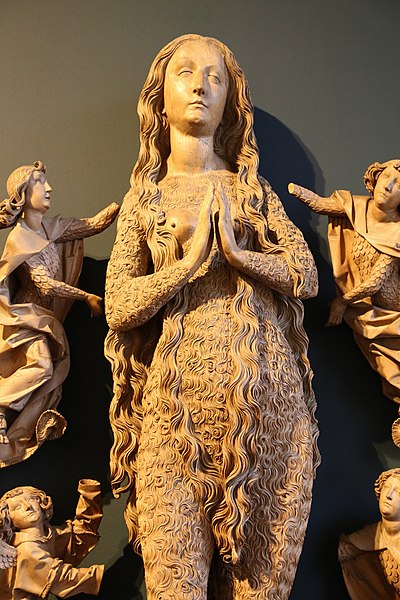July 31st is the feast, inter alia, of St Neot.
By way of introduction I will reproduce this piece about the church of St Neot in Cornwall from Wikipedia:
The original dedication may have been to 'St Anietus', with whom the
Saxon Neot has been confused. In the 11th century a small monastery
existed here; the early medieval church building (of which the tower
remains) must have been smaller than the one in existence today.
Rebuilding in granite was undertaken in the 15th century and the fine
stained glass windows are from about 1500. The stained glass is partly original and partly from a restoration done by John Hedgeland, circa 1830.
There are 16 windows of 15th or 16th century workmanship unless
indicated: 1: the Creation window; 2: the Noah window; 3: the Borlase
window; 4: the Martyn window; 5: the Motton window; 6: the Callawy
window; 7: the Tubbe and Callawy window; 8: an armorial window
(Hedgeland); 9: the St George window (15th century); 10: the St Neot
window (12 episodes from the legend); 11: the Young Women's window (four
saints with the 20 donors below); 12: the Wives' window (Christ and
three saints with the 20 donors below); 13: the Harris window; 14: the
Redemption window (Hedgeland); 15: the Acts window (Hedgeland); 16: the
chancel window depicts the Last Supper (Hedgeland; copied from the
earliest representation in the British Museum).
Nearby is the holy well of St Neot. Legend tells that the well
contained three fish, and an angel told St Neot that as long as he ate no
more than one fish a day, their number would never decrease. At a time
St Neot fell ill, and his servant went and cooked two of the fish; upon
finding this, St Neot prayed for forgiveness and ordered that the fish
be returned to the well. As they entered the water, both were
miraculously returned to life.
There is another piece about the church from the Cornwall Historic Churches Trust at www.chct.info/histories/st-neot/ This makes the point that after Fairford in Gloucestershire this is the most complete schenme of late medieval glazing to survive.
| | |
|
|

St Neot Parish Church, Cornwall
Image:©
David Coppin
Gordon Plumb has posted the following piece on the Medieval Religion
discussion group, which I have copied in its entirety and which looks at
the cult of the saint and its depiction in stained glass
St Neot, St Neot, Cornwall, nVII:
Glass of c1530 showing the story of St Neot. Neot was a monk and hermit who gave his name to St Neot, Cornwall and St Neots, Cambridgeshire (formerly Hunts). He joined the Glastonbury community early in his life and moved from there to a spot near Bodmin Moor as a hermit, and there he founded a small monastery. He was buried in the church where, later, his relics were enshrined on the north side of the sanctuary.
In 972-7 Earl Leofric founded a monastery at Eynesbury in Huntingdonshire with monks from Thorney abbey. These monks obtained by gift or theft the greater part of the relics of Neot from the Cornish shrine. That is what the accepted medieval version of Neot's life says, but G. McNeil Rushforth in his article on the St Neot's glass says "It is a far cry from Huntingdonshire to Cornwall, and it seems more probable that there were two distinct saints - a Saxon Neot, perhaps founder of St Neot's Priory in Huntingdonshire where he was buried, and a Celtic or Cornish Neot (whose real name may have been Aniet or Niet), founder of a monastery or college which existed till the Norman Conquest. About the end of the eleventh century the Norman Abbey of Bec acquired a cell at Cowick, near Exeter, and it is suggested that here the monks may have heard of the Cornish St. Neot and the stories about him. In an uncritical age it was not to difficult to identify the two Neots and then to suppose that the body of the saint had been brought to Huntingdonshire from Cornwall".
The town of Eynesbury was then called St Neots. The priory was refounded c1086 from Bec in Normandy. Anselm declared that its relics were authentic and complete except for an arm left in Cornwall. Anselm gave to Bec a relic of Neot's cheekbone, presumably from the shrine at Eynesbury.
Neot is claimed to be of royal blood - either the East Anglian or Wessex dynasties. According to the Oxford Dictionary of Saints he was so small that he needed a stool to stand on when saying mass! The life written at Bec, one of three Latin lives (plus one Old English life) related incidents borrowed from the lives of Irish saints - including that of stags being yoked to the plough to take the place of oxen stolen by robbers. This Bec life is the source of this window at St Neot, donated by the young men of the parish in ?1528 (the date is missing in records of the glass before restoration).
The window was subjected to considerable restoration by J.P.Hedgeland in the later 1820's who, according to one writer "supplied deficiencies in a manner so perfectly like the former, as not to be distinguishable from it"! Hedgeland did plates of the restored windows in a book published in 1830..
Here are details of the panels of the window and an indication of their subject matter
Panel 3a, Neot abdicates in favour of his brother, on whose head he places the crown:
Panel 3b, Neot becomes a monk at Glastonbury:
Panel 3c, Neot saves a doe from a hunter:
Panel 3d, Neot finds three fish in his well:
Panel 2a, Neot bids his attendant bring him the fish for his meal:
Panbel 2b, Neot's attendant takes two fish from the well, grilling one and boiling the other:
Panel 2c, attendant brings Neot two fish fo9r his daily meal:
Panel 2d, attendant takes two fish he has cooked back to well and throws them in as ordered by Neot, and they are restored to life:
Panel 1a, theft of Neot's oxen:
Panel 1b, deer replace the oxen in ploughing:
Panel 1c, The thieves restore the stolen oxen:
Panel 1d, Neot at Rome receiving the Pope's blessing.
Here is my photograph of the Hedgeland plate of the restored St Neot window, photographed from my copy of the book:
The glass of St Neot is discussed, other than in the 1830 book by Hedgeland by:
G[ordon] McN[eil] Rushforth, The Windows of the Church of St Neot Cornwall. Transactions of the Exeter Diocesan Architectural And Archaeological Society, Vol. XV, 1937. Later separately reprinted innthe same year as a 43pp. pamphlet
Mattingley, Joanna, "Stories in the Glass - Reconstructing the St Neot Pre-Reformation Glazing Scheme, Journal of the Royal Institution of Cornwall, New Series II, Volume III, Parts 3 and 4, 2000, pp. 9-55.

The parish church of St Mary at St Neots in Huntingdonshire
Image:churchestogetherinstneots.org.uk










